Purpose
This safety alert provides information about the affected components identified with asbestos and recommended action for owners.
Background
In 2019, Workplace Health and Safety Queensland investigated asbestos in Shantui forklift battery insulation and engine and hydraulic system gaskets. Sample analysis results confirmed asbestos in the following, which were imported to Australia from China in 2013:
- battery insulation and exhaust gaskets of 3-tonne forklifts
- exhaust gaskets of 5-tonne forklifts
- exhaust gaskets and the hydraulic tank gasket of 7-tonne forklifts.
The forklifts were imported by a person conducting a business or undertaking (PCBU). The PCBU has since removed the asbestos-containing components and a rapid response protocol (RRP) has been initiated – read more on the Asbestos Safety and Eradication Agency website.
Product description
3-tonne forklifts
|
Image
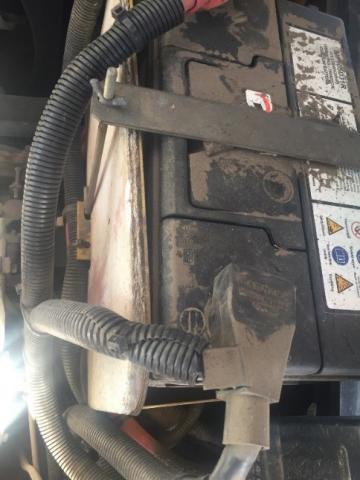
|
Image
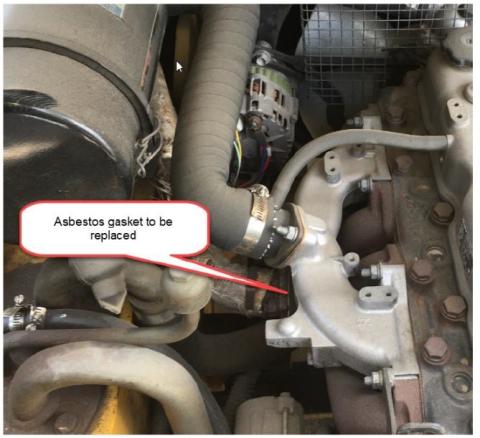
|
Image
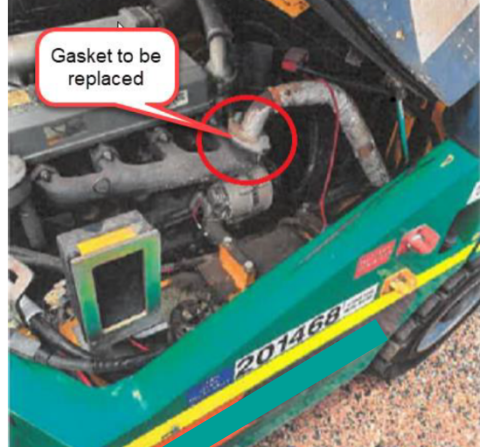
|
| Figure 1 - Asbestos insulating board above battery | Figure 2 - Exhaust manifold flange gasket | Figure 3 - Exhaust manifold flange gasket |
7-tonne forklifts
|
Image
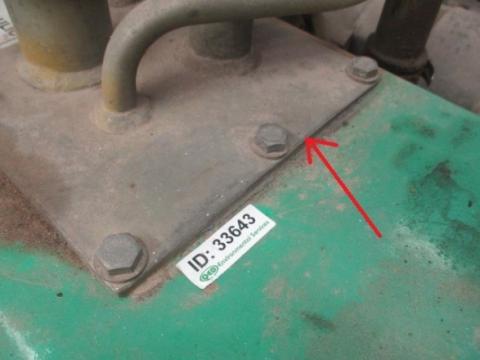
|
Image
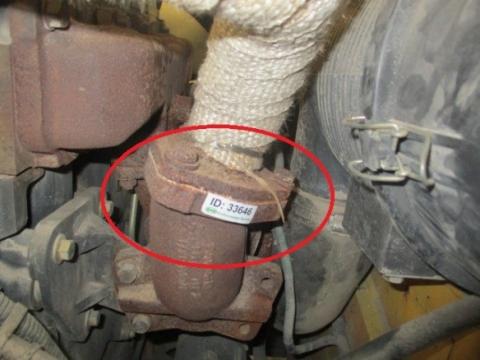
|
| Figure 4 - Hydraulic tank gasket | Figure 5 - Exhaust flange gasket |
5-tonne forklift
|
Image
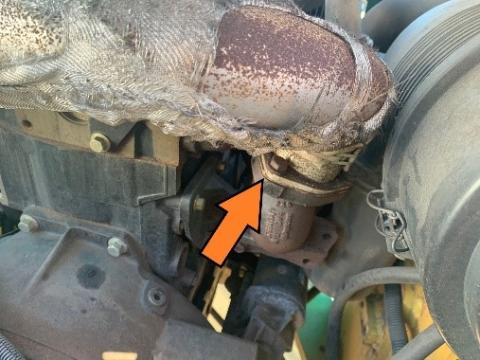
|
| Figure 6 - Exhaust flange gasket |
Work health and safety laws
Work health and safety (WHS) legislation places duties on PCBUs to manage the risk of asbestos containing material (ACM). The WHS legislation also places duties on PCBUs who are importers and suppliers to carry out or arrange sufficient tests and examinations to ensure that the imported plant, structure or substance meets work health and safety requirements. This includes confirming imported products and materials do not contain asbestos.
Risk
Analysis of the battery insulation material and the gaskets identified fibres of chrysotile asbestos bonded to other material. Any risk from asbestos depends on the extent of asbestos fibre release and inhalation of these fibres, which can be caused by damage to the materials.
As the asbestos fibres are bonded to other material it does not pose a measurable health risk through normal use. However, over time the materials may become damaged through wear and tear, resulting in the asbestos fibres being less bonded. Therefore, you should not perform any maintenance, repairs or modifications on these parts as this may lead to asbestos contaminated dust being released. Compressed air should also not be used on or in vicinity to these materials.
Recommended actions
It is unlawful for a PCBU to use or supply a product with asbestos if imported after the 31 December 2003 – this includes renting out affected forklifts.
1. Battery compartment of your 3-tonne Shantui forklift
It is recommended that users and owners of the forklifts inspect the battery compartment of the 3-tonne Shantui forklift for the presence of fibrous battery insulation material. If found, the forklifts should not be used and a competent person (for example a certified occupational hygienist, licensed asbestos assessor or licenced asbestos removalist) should be engaged to have a sample of the material analysed for the presence of asbestos.
If asbestos is confirmed within the battery heat insulation material, a competent person should remove the asbestos material in accordance with the How to manage and control asbestos in the workplace Code of Practice 2021 (669 KB). It is also recommended that a clearance certificate be obtained from the competent person after removal.
The forklift manufacturer should be consulted regarding a replacement heat insulation material.
2. Engine exhaust gaskets and hydraulic seal
The identified gaskets of the Shantui 3-tonne, 5-tonne and 7-tonne forklifts should be assumed to contain asbestos. Components identified with asbestos must only be removed by a person who is competent to do so safely. Appendix E of the SWA code of practice provides an example of a ‘working with asbestos friction materials’ safe work method that can be used, including appropriate personal protective equipment, decontamination and disposal of the asbestos waste.
Spare gasket materials of the same brand should also be assumed to contain asbestos unless testing confirms no asbestos is present. Alternatively, the spare gaskets can be disposed of as regulated waste and replaced with gaskets that are certified as asbestos free in accordance with Australian requirements.
3. Assess other forklifts for presence of asbestos containing gaskets
Although the testing results only confirm the presence of asbestos in these specific components, it is recommended that owners of imported forklifts generally assess for asbestos in other gaskets or components designed to resist heat. Sampling and accredited testing should be seen as a viable method for the assessment of suspect components.
Testing requirements
The WHS duty is on the importer and supplier to ensure materials they are importing and supplying do not contain asbestos. Customers can reasonably expect the supplier to provide evidence (as outlined below) that the materials do not contain asbestos.
If you import any items, it is your responsibility to have the items (and components of the items) tested for asbestos content so you can demonstrate that they are asbestos free.
If the imported product has a risk of containing asbestos, the Australian Border Force will require assurances that the product and its component parts do not contain asbestos. If assurance is not provided, you will face delays and be responsible for costs incurred when the product is held at the border for sampling and testing. Importers should be familiar with the information on the ABF website.
The only certain way of assuring a product does not contain asbestos is for a sample to be analysed by a laboratory accredited for asbestos identification. Australian accredited laboratories can be found at the NATA website.
In Australia, samples are to be sent to a laboratory that is NATA accredited for asbestos testing and conforms to the following:
- Accredited for compliance with ISO/IED:17025.
- Uses test method AS 4964-2004 for the qualitative identification of asbestos in bulk samples by polarised light microscopy (PLM) including dispersion staining techniques.
- Accredited by NATA for the above method, noting the following:
- AS 4964 will adequately identify crocidolite, amosite and chrysotile asbestos if present in the samples.
- However, AS 4964 states - samples of tremolite, actinolite and anthophyllite show a wide range of optical properties and cannot be equivocally identified by PLM and dispersion staining.
- This means that while the laboratory should be able identify if mineral fibre/s are present, it may not be able to identify if the fibre is tremolite, actinolite and anthophyllite asbestos.
Therefore, the laboratory carrying out the analysis must provide a test analysis certificate that:
- includes a statement that the laboratory complies with ISO/IED:17025, is accredited by NATA for the method used and state the test method used, and
- states if asbestos is present, including the type of asbestos, or
- states no asbestos detected (NAD) when no asbestos has been detected, and
- also state the limit of detection of the analytical method, and
- states if unknown mineral fibre/s were identified, and
- has a batch number or unique identifier such as a serial number to identify the goods or materials tested.
If the test analysis is uncertain regarding asbestos content and/or unknown mineral fibres were identified, you must either:
- assume asbestos fibres are present and manage the product as an asbestos containing material
- have the samples analysed using a confirmation technique such as electron microscopy that will identify unknown mineral fibre/s and XRD analysis that will determine the chemical composition of the unknown mineral fibre/s.
Managing the risk of asbestos in imported products
The Preventing goods or materials containing asbestos being supplied to workplaces in Queensland includes information on:
- how the importation of asbestos is regulated at the Australian border and the products at particular risk of containing asbestos
- what businesses must do to ensure imported products do not contain asbestos
- types of verifications that exist for Australian importers or consumers to show imported materials do not contain asbestos
- acceptable standards for testing if materials contain asbestos.
Contact your WHS regulator
| Jurisdiction | Regulator | Contact details | Website |
|---|---|---|---|
| QLD | Workplace Health and Safety Qld | 1300 362 128 | www.worksafe.qld.gov.au |
| QLD | Qld Gov Asbestos page | 13 74 68 | www.asbestos.qld.gov.au |
| ACT | WorkSafe ACT | 02 6207 3000 | www.worksafety.act.gov.au/health_safety |
| ACT | Asbestos Awareness ACT Government |
13 22 81 | www.asbestos.act.gov.au |
| C’wealth | Comcare | 1300 366 979 | https://www.comcare.gov.au/safe-healthy-work/dust-conditions |
| NSW | Safework NSW | 13 10 50 | www.workcover.nsw.gov.au |
| NT | Worksafe NT | 1800 019 115 | https://worksafe.nt.gov.au/safety-and-prevention/asbestos |
| SA | SafeWork SA | 1300 365 255 | www.safework.sa.gov.au |
| SA | SA Gov Asbestos page | 1300 365 255 | www.asbestos.sa.gov.au |
| TAS | Worksafe TAS | 1300 366 322 | https://www.worksafe.tas.gov.au/asbestos-safety |
| VIC | Worksafe VIC | 1800 136 089 | www.worksafe.vic.gov.au |
| VIC | Vic Gov Asbestos page | 1800 136 089 | www.asbestos.vic.gov.au |
| WA | WorkSafe WA | 1300 307 877 | www.commerce.wa.gov.au/WorkSafe |